The ZY Optics Mitakon Speedmaster 25mm f0.95 is a normal focal length lens for the Micro Four Thirds system released in fall 2015. It is a purely manual lens from China. The Mitakon 25mm 0.95 is the third manual F/0.95 lens for the MFT-system. The other lenses are made by Cosina Voigtländer and SLR Magic. The Mitakon 25mm is a lot cheaper, smaller and lighter than the competition. It has a RRR of 400 $, while the Voigtländer and the SLR Magic have a RRR of 800$. The Mitakon is only 60mm x 5mm (diameter x lenth) and weights 230g. Both the Voigtländer (58mm x 70mm, 410g) and the SLR Magic (65mm x 85mm, 490g) are bigger and heavier.
Did ZY Optics release a little marvel or did they have to reduce the image quality to achieve this size and price?
The build quality of the ZY Optics Mitakon Speedmaster 25mm f0.95
The Mitakon 25mm is shipped in a very high quality box. Both lens caps are included, but there are no other accessories, not even a lens hood.
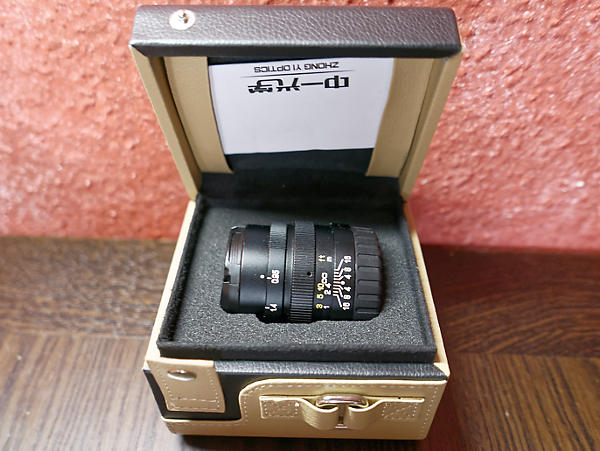
The build quality of the ZY Optics Mitakon Speedmaster 25mm f0.95 is very high. It is made of metal and the focus ring as well as the aperture ring are well damped and move smoothly.
But there is one problem. The upper part of the lens is only screwed-in and can move if you attach a filter. Do not worry, this does not move the glass, so you are not decentering your lens. However, the marking dot for the aperture does move. This means after adding or removing a filter you have to check, if it still fits the F/0.95 or F/16 marking and to adjust it accordingly.
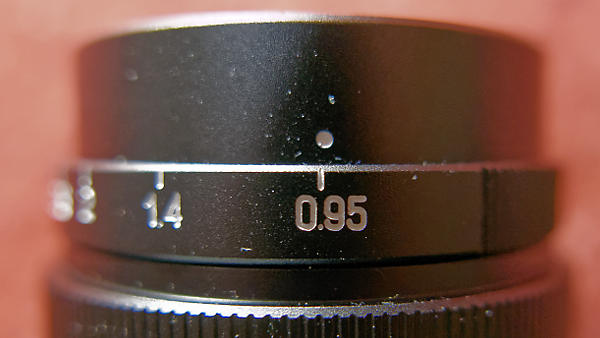
Focusing and aperture of the Mitakon 25mm 0.95
The Mitakon 25mm 0.95 is a purely manual lens. Focus as well as aperture have to be set by hand. The lens extends slightly during focusing, but the front does not rotate. This means you can use polarizer filters without problems.
The aperture can be set stepless, which is good for shooting video.
The smallest aperture of the Mitakon 25mm 0.95 is F/16.
Is it really F/0.95? – f-stop vs. t-stop
Every lens has a difference between the theoretical light transmission (f-stop) and the real light transmission (t-stop). The important question is, how big is this difference? I have compared the ZY Optics Mitakon Speedmaster 25mm f0.95 with the Panasonic 25mm F1.7. The shutter speeds for the Mitakon at F/0.95 are between one and one and a half stops faster than those of the Panasonic at F/1.7. Which means on average it is one and a third stop faster. In my review I concluded that the Panasonic seems to be a T/1.8 lens. DxOMark.com says the Panasonic is a T/2 lens.
This means that the maximum transmission of the Mitakon 25mm F/0.95 is at least T/1.3, most likely even T/1.2. This means it is half a stop faster than the Panasonic-Leica 25mm F1.4, which is a T/1.7 lens according to DxOMark.
The transmission of the Mitakon 25mm is not excellent, but still in the ballpark. Half a stop and two thirds of a stop difference between the f-stop and the t-stop is not unusual.
(Note: Calculating with the f-stop numbers is a bit complicated. F/1.7 minus one f-stop is not F/0.7, but F/1.2 as the f-stops are F/1, F/1.4, F/2, F/2.8 and so on.)
The low light potential of the Mitakon 25mm 0.95
The low-light potential of the Mitakon 25mm 0.95 is impressive. Taking pictures after sunset with this lens is a lot of fun. If you shot raw and adjust the shadows in post processing, it is a bit like you had night vision goggles attached to your camera.
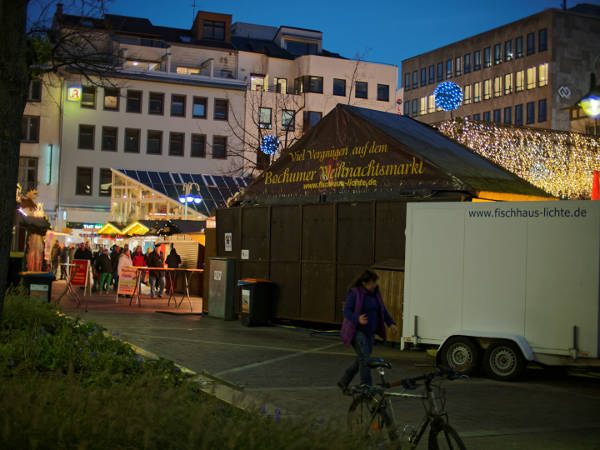
This photo was taken after sunset, it was practically dark.
Object isolation with the Mitakon 25mm F/0.95
The potential of the Mitakon 25mm F/0.95 is also impressive. It is not only possible to blur the background, it is almost possible to make objects in the foreground disappear.
These images were taken on the same spot, just the focus was changed:


Sharpness of the ZY Optics 25mm f0.95
I already published a sharpness comparison between the ZY Optics 25mm and the Panasonic Lumix 25mm F1.7. The results of the Mitakon were impressive. But how well fares the ZY Optics 25mm f0.95 during real life shooting?
The image center is already sharp at F/0.95, but of course the image borders are soft at this setting – we are talking about F/0.95! If you look at the images at 100%, you will see this softness. If I look at comparison images (F/0.95 vs F/5.6) at my 24” UHD monitor and a 50% setting (that is about 12”x9”) you can still see the difference, but only if you look closely.
Without looking at comparison images, most of the F/095 images I have taken are sharp enough. This means I am going to use the F/0.95 images for prints up to 12”x9”.
The sharpness constantly improves upon stopping down. At F/5.6 the center reaches outstanding sharpness and at F/8 even the extreme corners are sharp.
The Mitakon 25mm 0.95 and the field curvature problem
There are reviews online that claim that the Mitakon 25mm 0.95 has a very weak performance at the image borders and corners and does not reach decent levels of sharpness until it is stepped down to F/8. This reviews do not take the field curvature into account. Field curvature means that the focus point at the corners is different from the focus point in the image center. This means if you focus at the borders you get a good border performance (and a weak image center), if you focus at the image center and then look at the borders, they are very soft as they are out of focus.
In some situations this is a very serious problem and reduces the image quality by a great degree. Here is an image that shows this problem:
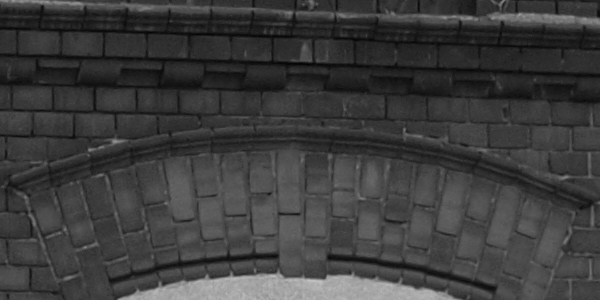
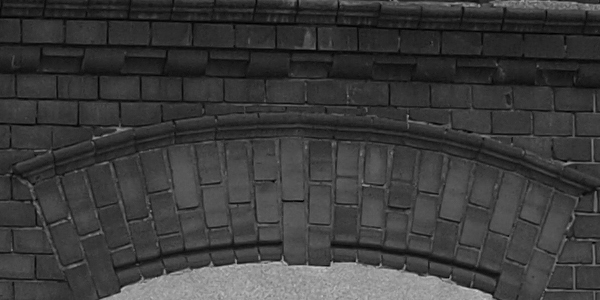
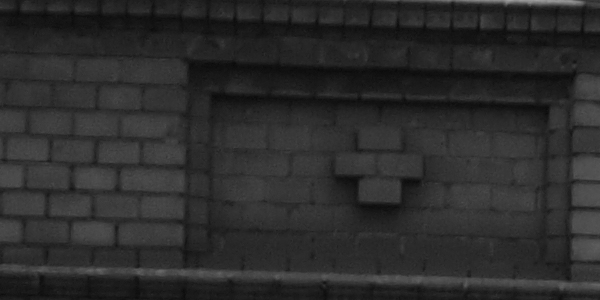
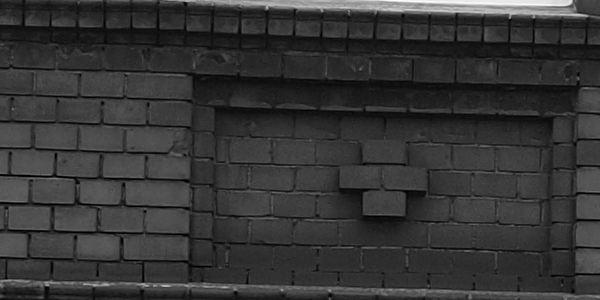
As you can see, at F/8 the problem mostly disappeaers.
With focus close to infinity and focus on the image center the problem also disappears – even at F/0.95. (Annotation: But only if focused on the image center. If the focus is on the image border, the image center is slightly out of focus due to the field curvature even at focus close to infinity.)
This means some cases of low light photography are not possible with the Mitakon Speedmaster and you cannot expect images that are sharp from corner to corner at F/0.95.
But honestly, how often do you take architectural pictures at F/0.95? Most of the time this will be impossible due to the shallow depth of field at F/0.95.
Most of the time F/0.95 will be used for images with a maximum object isolation or for taking pictures of moving objects / people in low light (street photography, at parties and so on). Low light landscape images are also possible, if the focus is set on the image center.
If you want maximum isolation additional blur in the other parts of the images is a good thing. In low-light photography at F/0.95 most of the time only one part of the images will be sharp due to the shallow depth of field anyway.
But the limitation remains that the Mitakon 25mm f0.95 is not a lens for architectural photography.
Sharpness of the Mitakon 25mm near infinity
The following test photos were made with the focus close to infinity and under realistic conditions. This means I took only one handheld image. (Which means there is a slight possibility of focus errors.) The pictures are out-of-camera JPGs from my OM-D E-M5II (Monochrome mode with simulated green filter).
Image center of the ZY Optics Mitakon Speedmaster 25mm f0.95

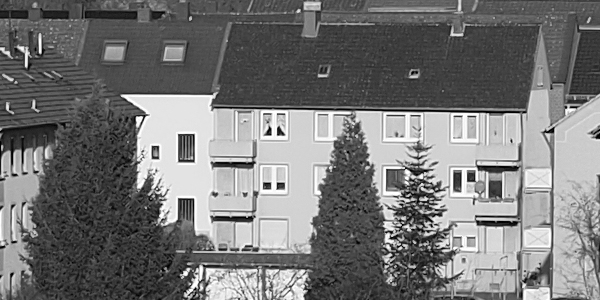
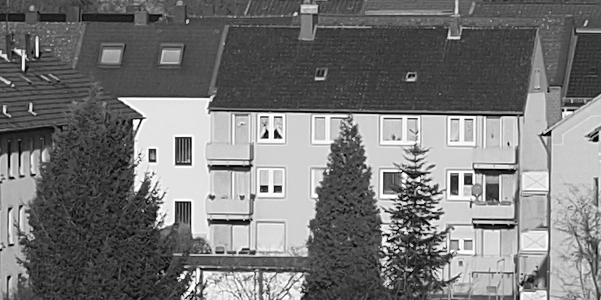
Again the performance of the ZY Optics Mitakon Speedmaster 25mm f0.95 in the image center is already good enough for most uses at F/0.95 and very good at F/2.
Left border of the Mitakon 25mm F/0.95
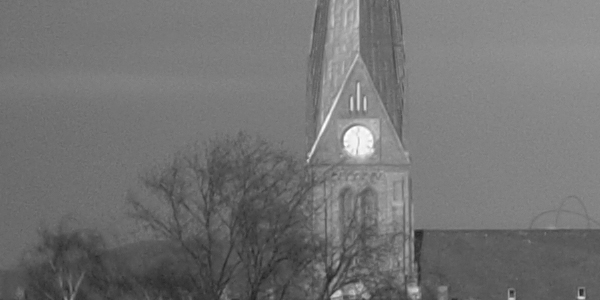
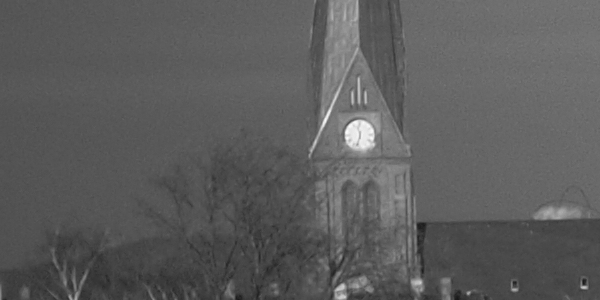
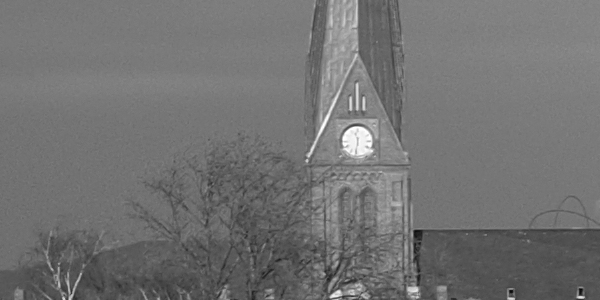
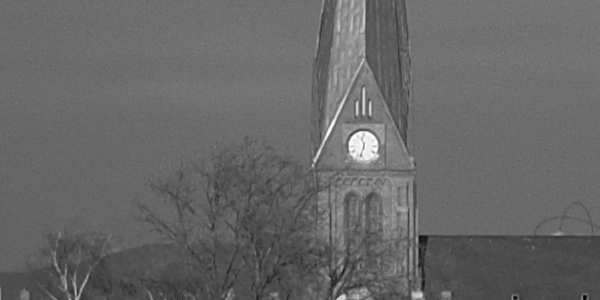
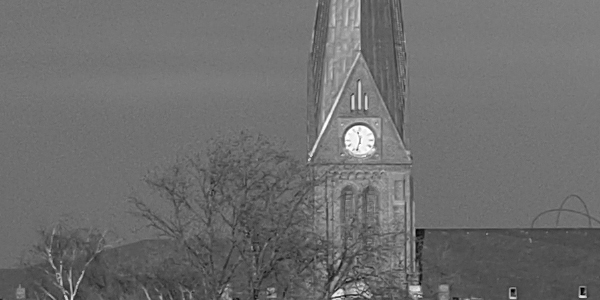
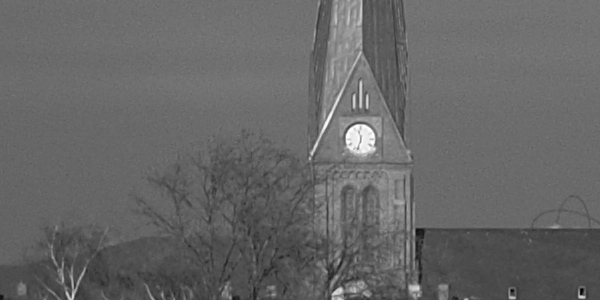
The focus was on the church tower. Again the test pictures show that the borders at F/0.95 are useable, but still quite soft. They are already a lot sharper at F/2 and at F/8 they are very sharp.
Lower right corner of the Mitakon 25mm 0.95
This an extreme corner of the image. Again the focus was on the church tower. The corners are really soft at F/0.95, again they sharpen up noticeably at F/2. At F/8 even the extreme corners are sharp.
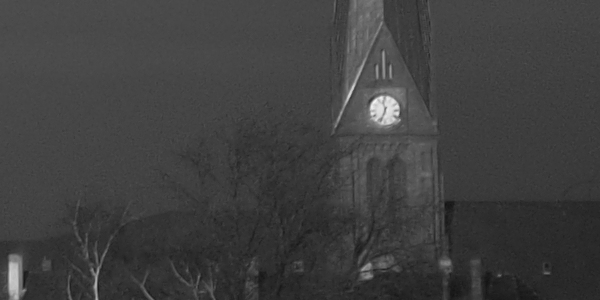
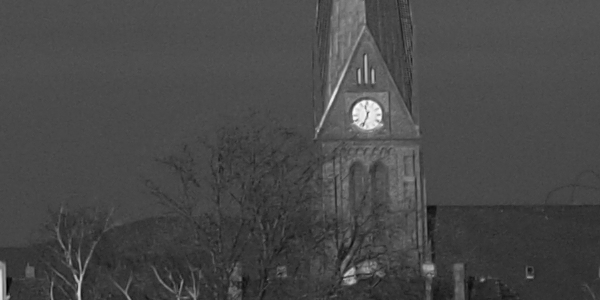
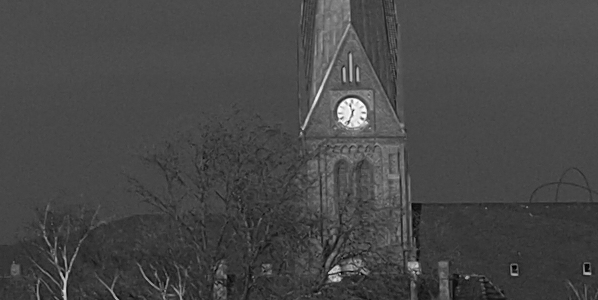
The field curvature near infinity
With a focus near infinity the field curvature is not a problem. However, this is only true if you focus on the image center. If the focus is on the image border, the image center is slightly out of focus even with focus close to infinity.
Sharpness with focus close to infinity – conclusion
In my opinion the ZY Optics Mitakon Speedmaster 25mm f0.95 fares well. The bigger problem than a lack of sharpness at F/0.95 is the shallow depth of field at this aperture. (According to dofsimulator.net the hyperfocal distance at F/0.95 and 18 Megapixel is 305ft and everything from 152ft to infinity is in focus. If the focus is set to 75ft the depth of field is only 47ft.)
Mitakon 25mm 0.95 and chromatic aberrations
There are two kinds of chromatic aberrations: longitudinal aberrations, which appear at the transitions between sharp and blurred areas of the image, and lateral aberrations, which appear on high contrast edges at the image borders.
Longitudinal aberrations of the Zhongyi 25mm f0.95

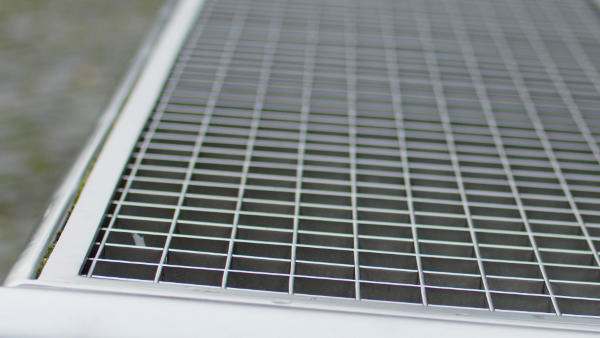
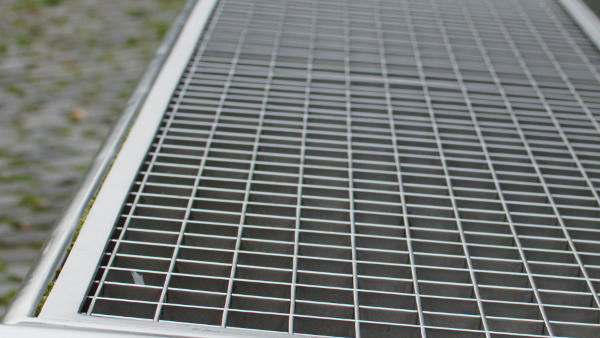
Almost every fast lens suffers from longitudinal aberrations to some degree. The Mitakon 25mm 0.95 is no exception. But overall the longitudinal aberrations are well controlled and they are only bothersome in extreme situations.
Lateral abberations of the Zhongyi Mitakon 25mm f0.95
There is a slight amount of lateral chromatic aberrations. If you look at the borders of images at 200%, you will see green and red stripes at contrasty edges. However, this is not a problem at all. Although there is no electronic communication between the lens and the camera, the camera already removes these CAs in out-of-camera JPGs (at least my OM-D E-M5II does). Most raw-converters also remove CAs automatically or with a few clicks.
You can see examples of the uncorrected CAs in the 100% crops from the image borders in my sharpness comparison with the Panasonic 25mm.
Bokeh of the ZY Optics Mitakon Speedmaster 25mm F/0.95
The assessment of the bokeh (aesthetical quality of the out-of-focus areas) is very subjective. In my opinion the bokeh of the ZY Optics Mitakon Speedmaster 25mm F/0.95 is pleasing.
Here are some sample images:
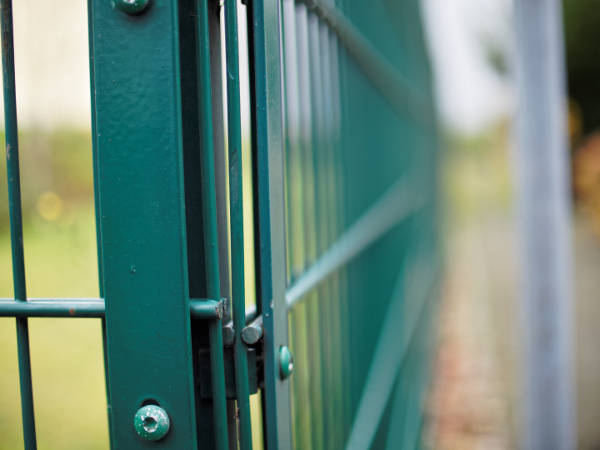




Vignetting and distortion of the Mitakon 25mm F/0.95
There is a slight amount of barrel distortion, but in most pictures it is not noticeable and if it is, it is easily corrected.
As expected the vignetting is clearly visible at F/0.95. It is a lot reduced at F/2 but still visible. Stepping the lens down further completely removes vignetting.
Flares of the ZY Optics Mitakon Speedmaster 25mm f0.95
If there is a strong light source in the image – regardless if it is the sun or artificial light – the ZY Optics Mitakon Speedmaster 25mm f0.95 is prone to flares. However, once the light source is outside of the frame – even if it is only slightly – the flares are gone.
At F/0.95 the flares are weak, but cover large areas of the images and cause a loss of contrast. Stepping the lens down changes the character of the flare. They become smaller, but stronger.
Let’s start with an extreme case:

This is a more realistic situation:
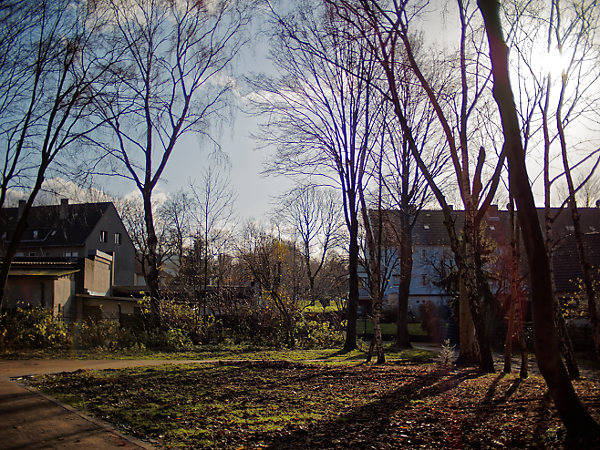

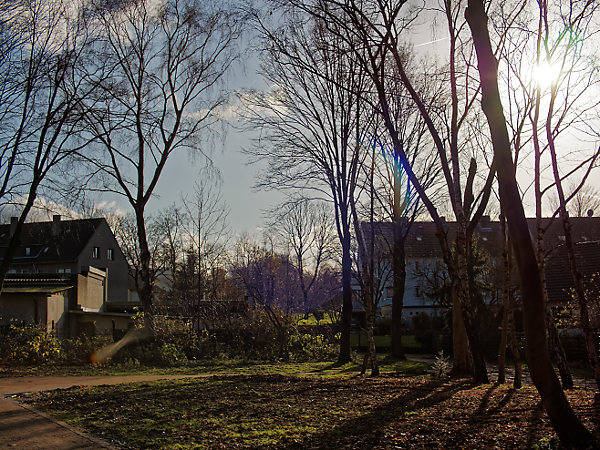
Here you can see how stepping down changes the character of the flares.
A lens hood of the ZY Optics Mitakon 25mm f0.95?
I was quite surprised that the ZY Optics Mitakon 25mm f0.95 is not shipped with a lens hood included. The first thing I did was to order a lens hood that can be screwed into the filter thread. (
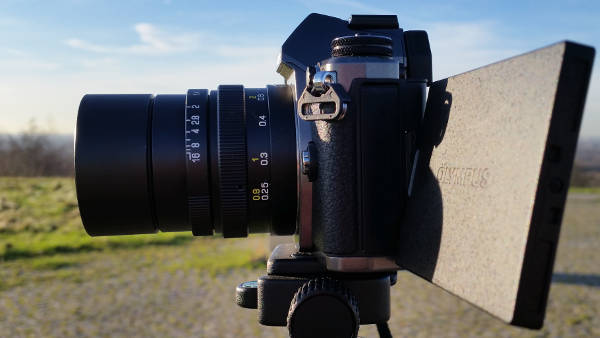
The lens hood fits the Speedmaster 25mm perfectly. Sadly the lens hood has no influence on the flares. I did several comparison images. If the sun is slightly outside the image, the flares are gone anyway, if the sun is inside the image, the lens hood does not help. At least the lens hood is a good protection for the front element.
The fitting 43mm version of the lens hood causes a slight amount of vignetting at F/0.95 and a noticeable amount if used together with a filter. It is possible to avoid this by using the 49mm version and a step-up ring. (and the
ZY Optics Mitakon Speedmaster 25mm f0.95 – Conclusion
I did not have high expectations of the ZY Optics Mitakon Speedmaster 25mm f0.95. Such a small F/0.95 lens for such a reasonable price seemed to be too good to be true. However, the Mitakon positively surprised me. The Mitakon has its flaws, but they are not as bad as I would have thought. In fact it is now one of my favorite lenses.
Let’s start with flaws of the Mitakon:
1. The most serious flaw is the field curvature. I have argued, that this flaw is not as deal breaking as it seems. Nonetheless there are situations where the field curvature causes parts of the image to be very soft. The Mitakon simply is not a lens for architectural photography.
2. If there is a strong light source in the image, the Mitakon 25mm F/0.95 produces strong flares. If you want to use them creatively, they are rather nice, but if you want a picture without flares, you have to watch your compostion.
3. I guess listing the missing autofocus as a flaw is not exactly fair. Everyone who buys the Mitakon 25mm 0.95 knows beforehand that it is a manual lens. With modern cameras with a high resolution EVF, magnification and focus peaking manual focus is surprisingly easy even at F/0.95. But there are situations where it is very hard to take images with manual focus. For example, if I try to take pics of my daughter indoors, while she is playing, it is almost impossible to get the focus right. The depth of field is so shallow at F/0.95 that even the slightest movement of her head or upper body causes the image to be slightly out of focus.
On the contrary taking pics of adults or doing street photography with the Mitakon 25mm is no problem (at least for me).
Now let’s talk about what the ZY Optics Mitakon Speedmaster 25mm f0.95 is good at:
1. At F/0.95 it produces a really shallow depth of field, which makes it easy to isolate objects.
2. The Mitakon has amazing low-light capabilities. In combination with the image stabilization of the OM-D cameras or if you shoot video (1/50 shutter speed) night turns into day.
3. The compact size and low weight of the Mitakon 25mm F/0.95 fits the idea of Micro Four Thirds perfectly.
4. Pure manual focus can be an advantage. Focusing with the Mitakon is a lot more comfortable than the fly-by-wire manual focus of many autofocus lenses. Especially when shooting video this is noticeable.
Overall I recommend the ZY Optics Speedmaster 25mm f0.95 – with the limitation that you keep its flaws and the things it is good for in mind.
Good for: |
Not good for: |
| Shallow depth of field / Object isolation | Architectural photography |
| Portraits | Pictures of fast moving objects (no autofocus) |
| Low-light photography | Back light images without flares |
| Video shooting |
At the moment the ZY Optics Mitakon Speedmaster 25mm f0.95 is only

A fantastic review. Very informative and of great help when deciding whether or not to buy this lens. I just put in my order after having read as much as possible on this lens, and I decided it will be a good one for my needs.
Thanks a lot, finally, i found an exhaustive review of this mysterious lens. Just a question, is it compatible with an Olympus OMD E-M10 Mark 2? Thanks
Hi Edoardo,
the lens is not compatible with Olympus cameras that have a „ladder“ structure at the lens mount / in front of the sensor. If your E-M10 Mark 2 does not have this „ladder“ structure it should be compatible.
Regards,
Jan